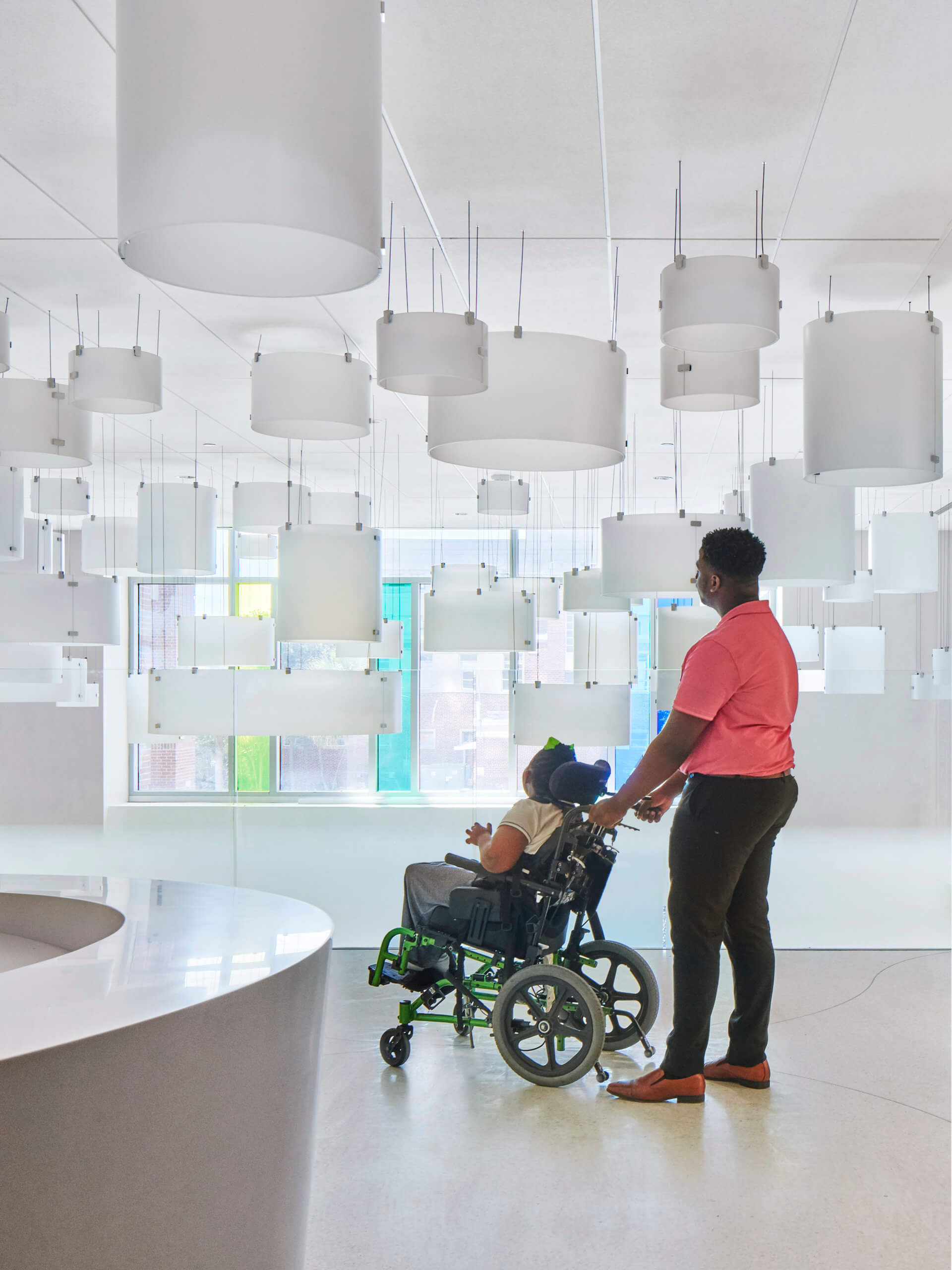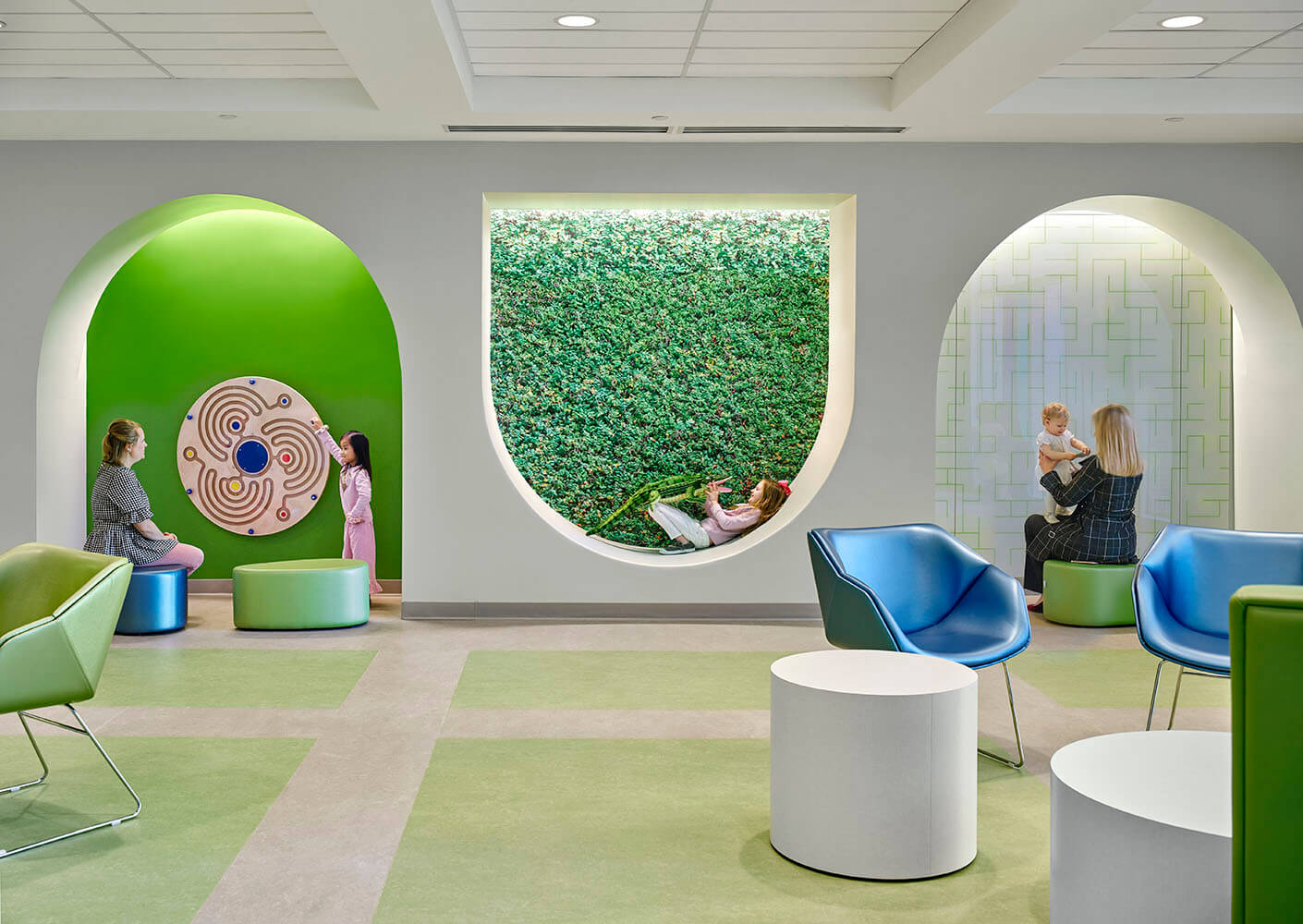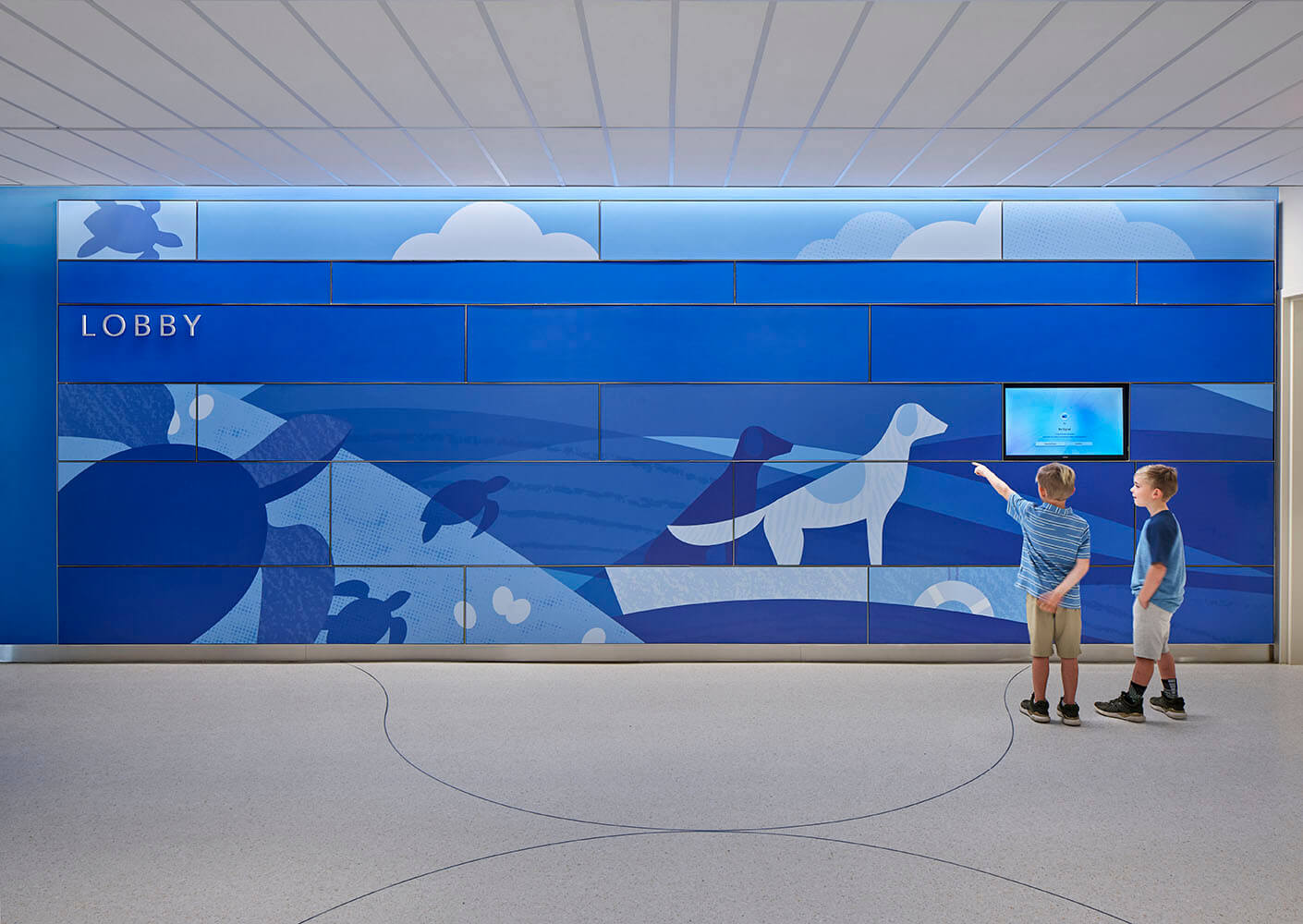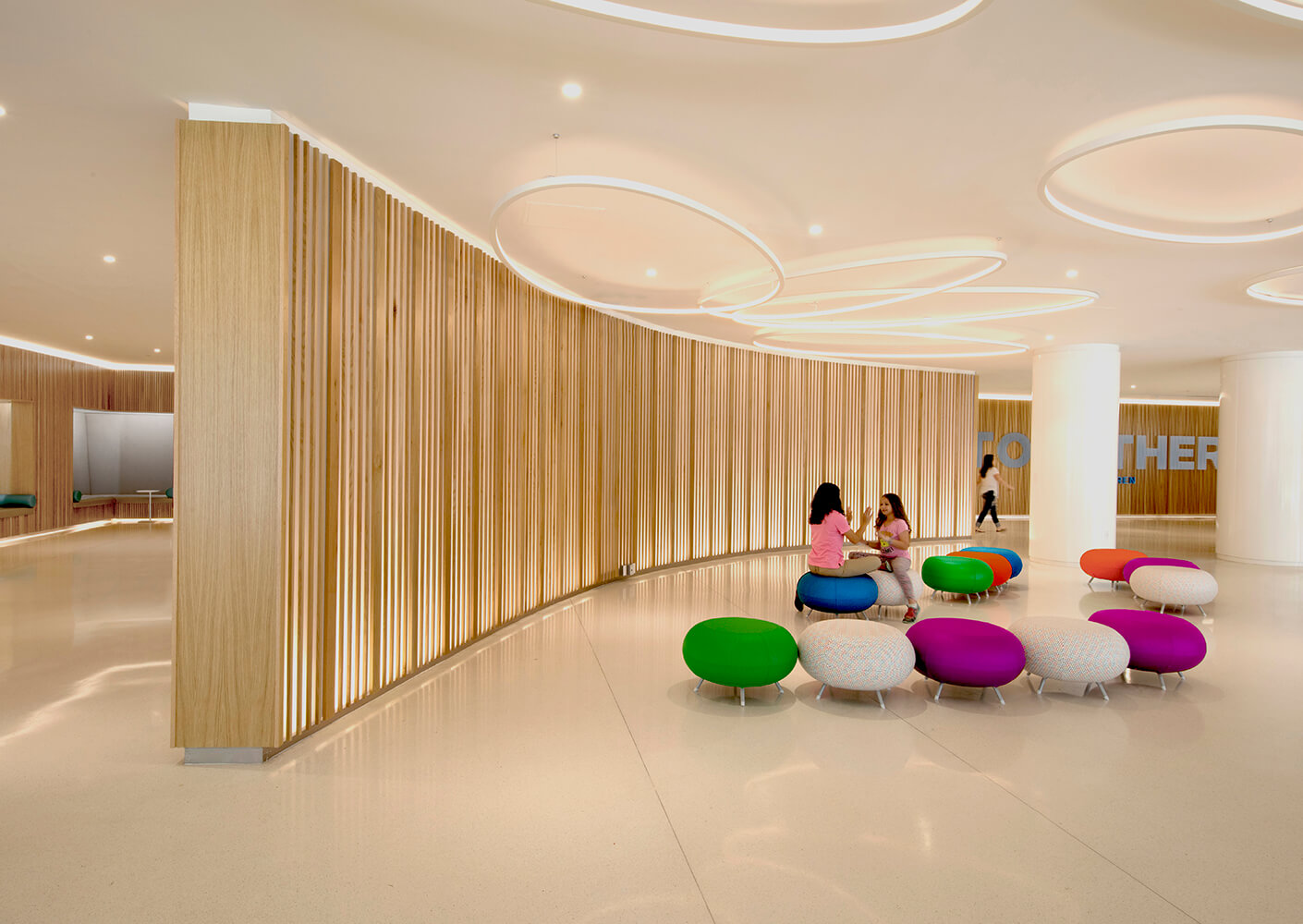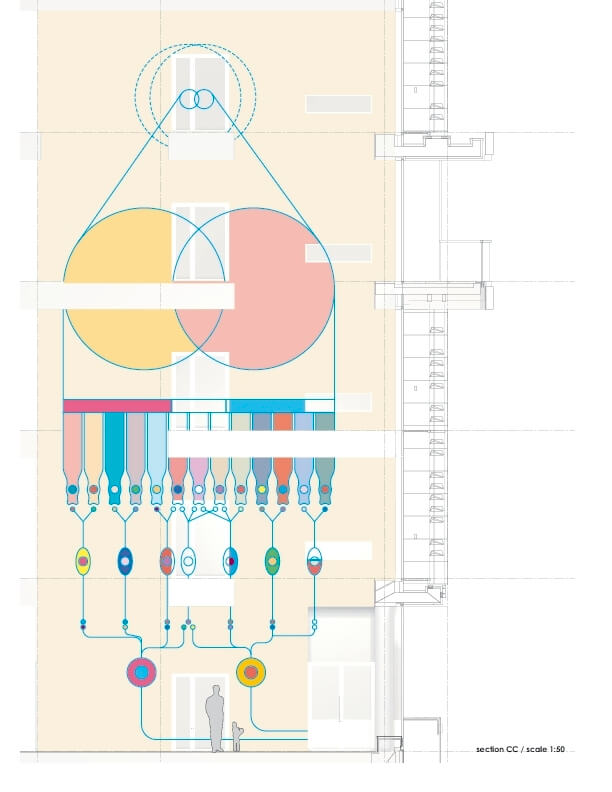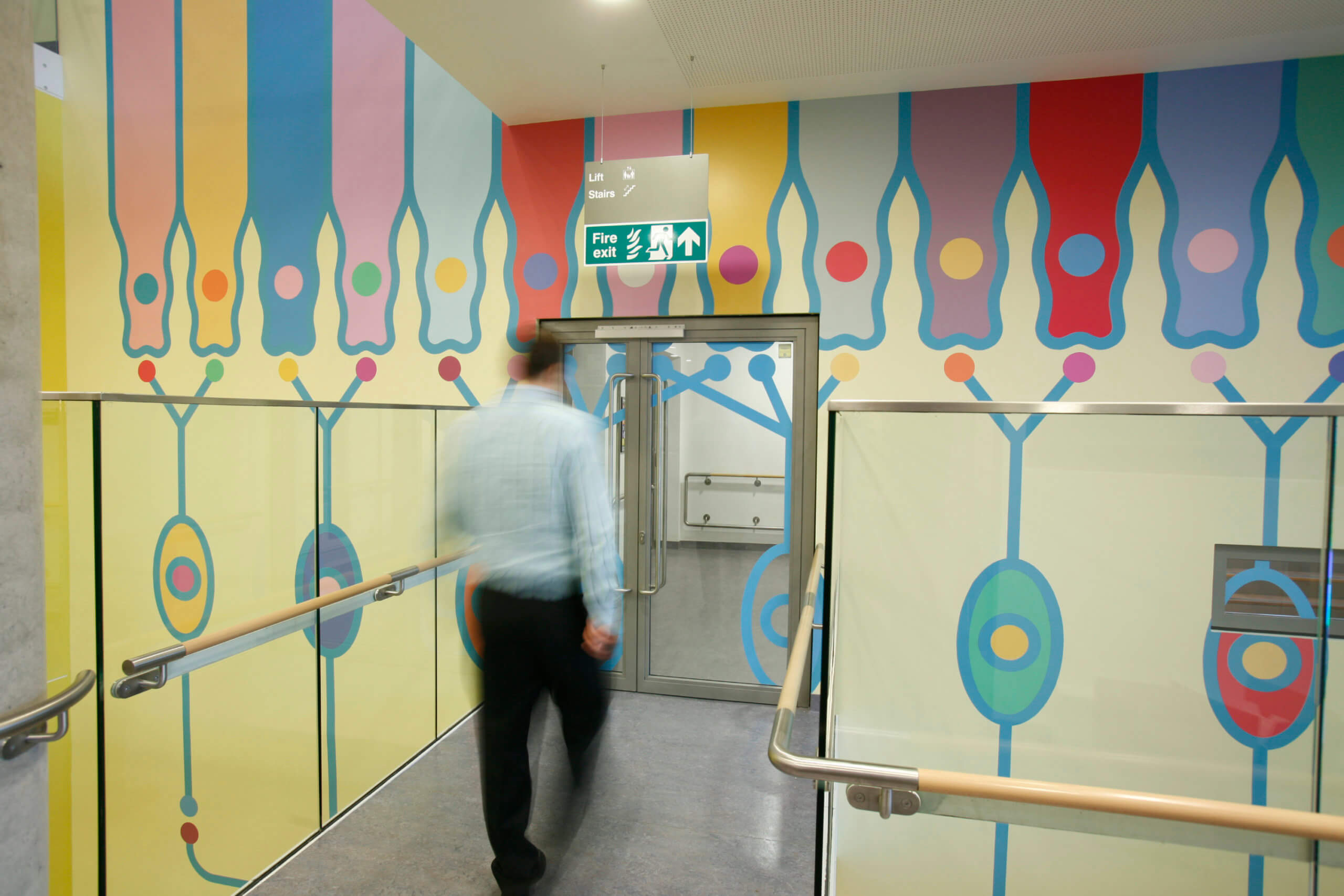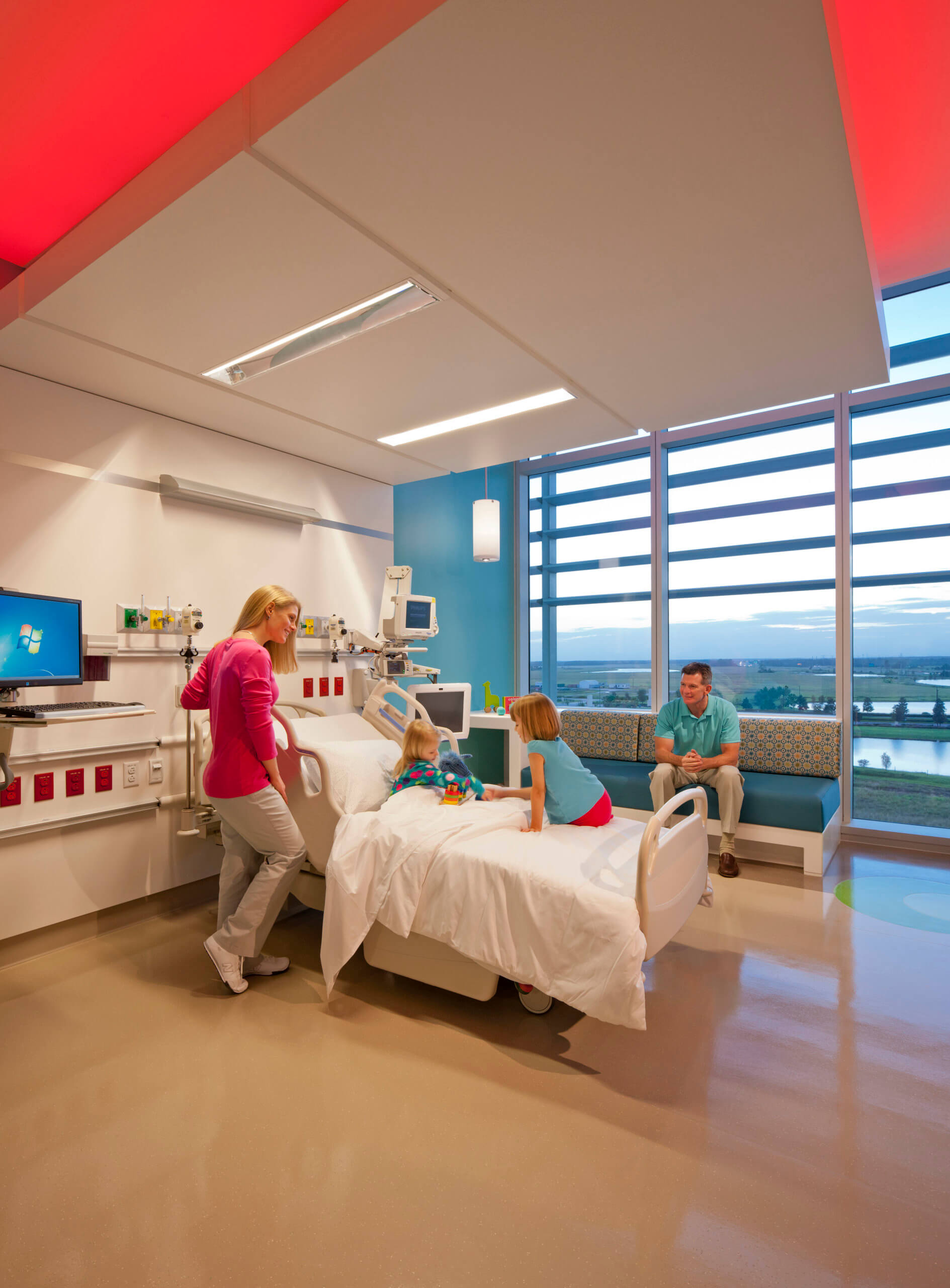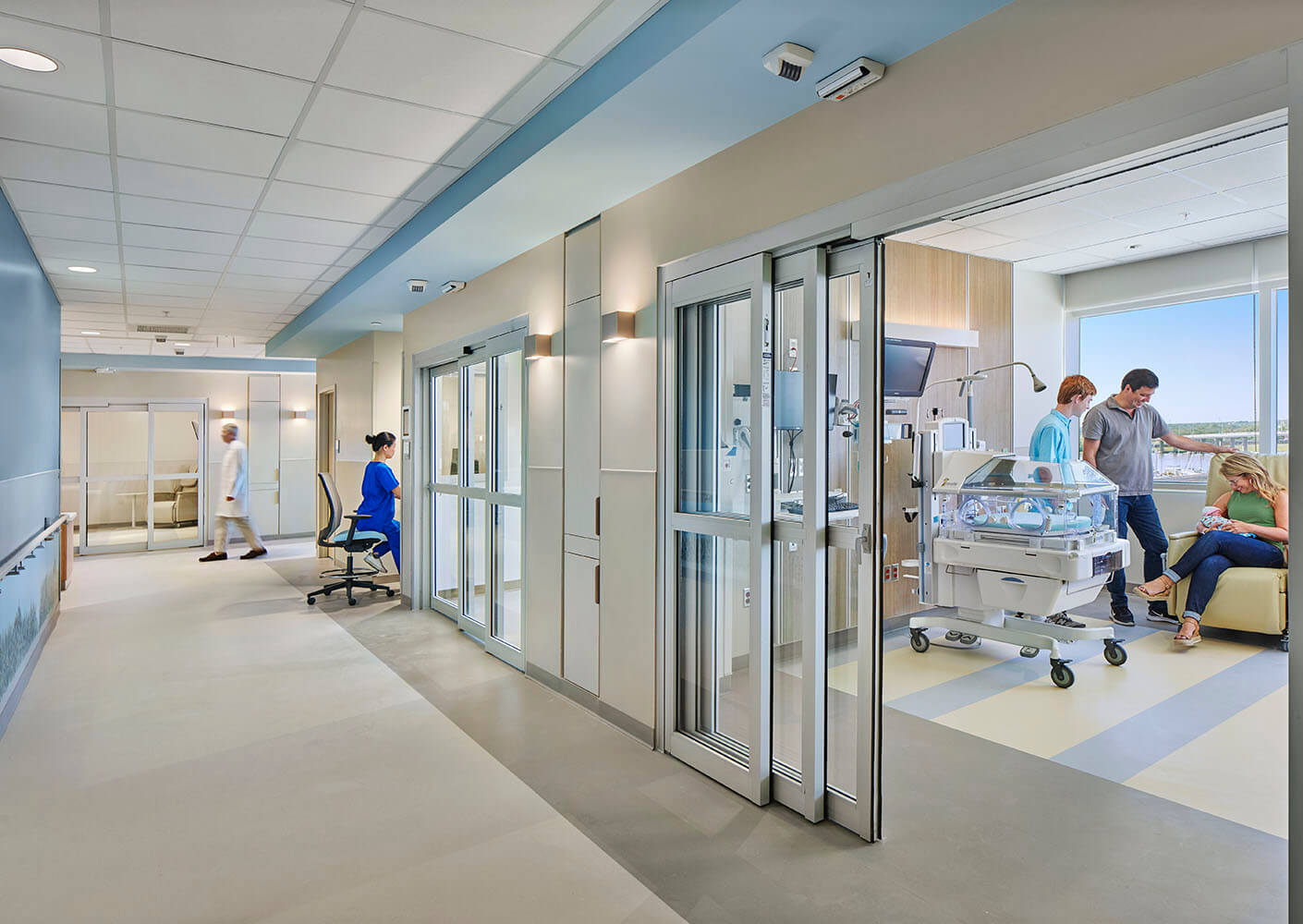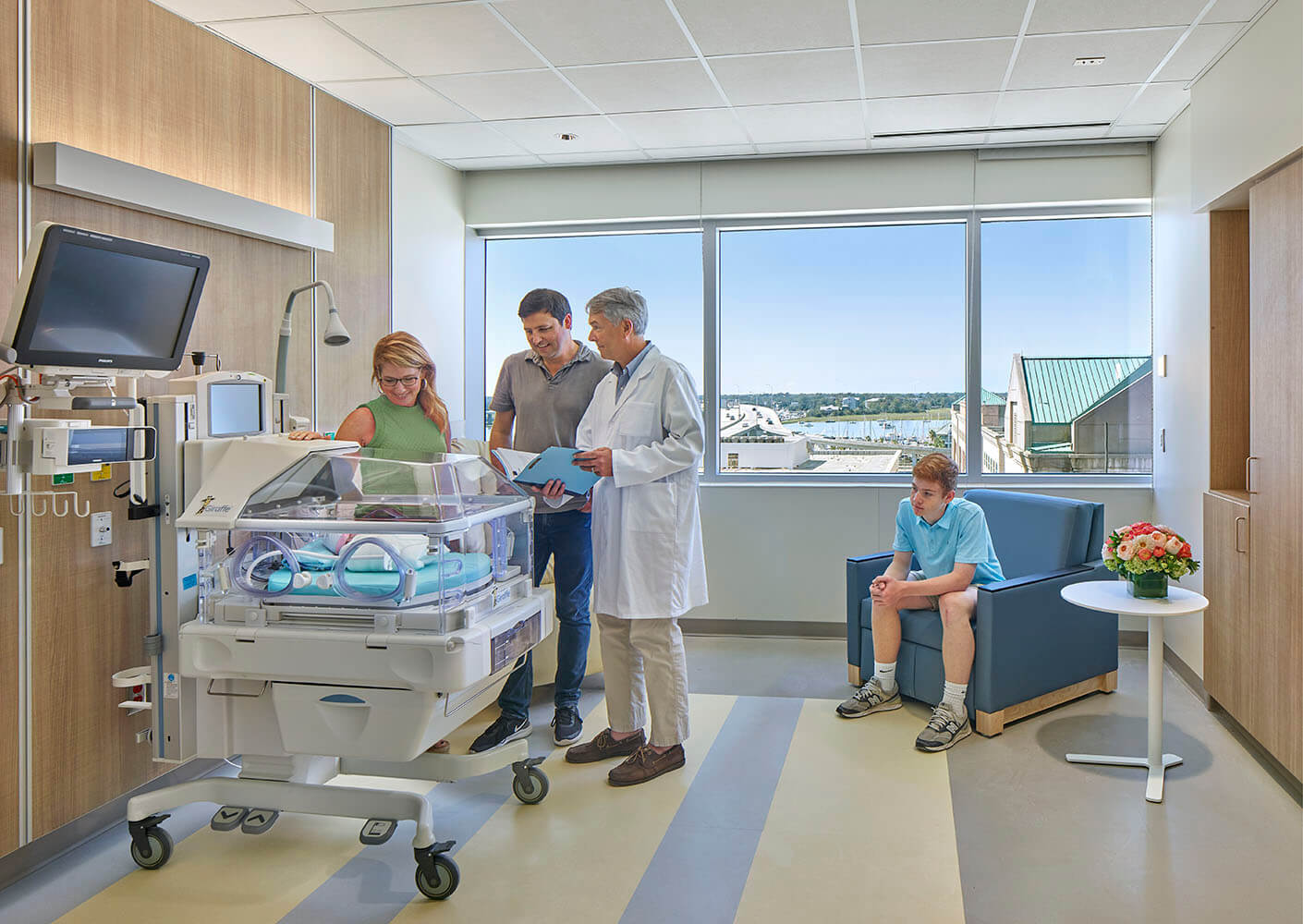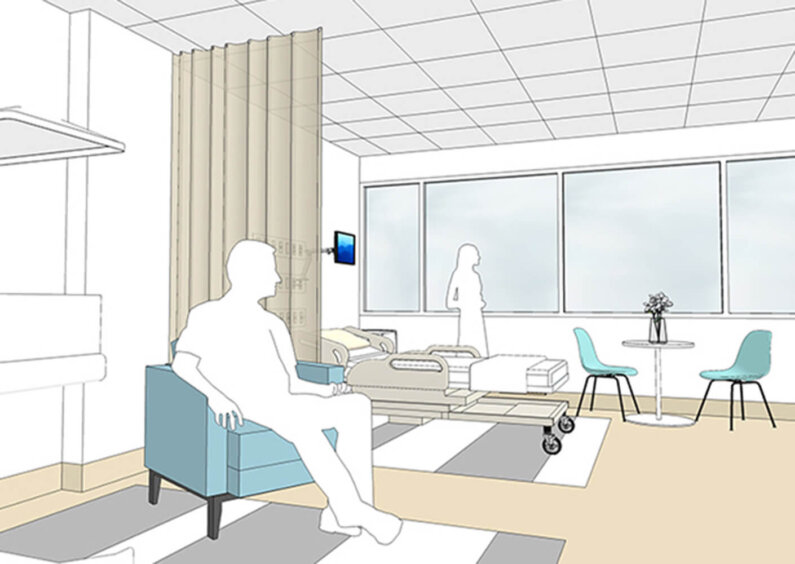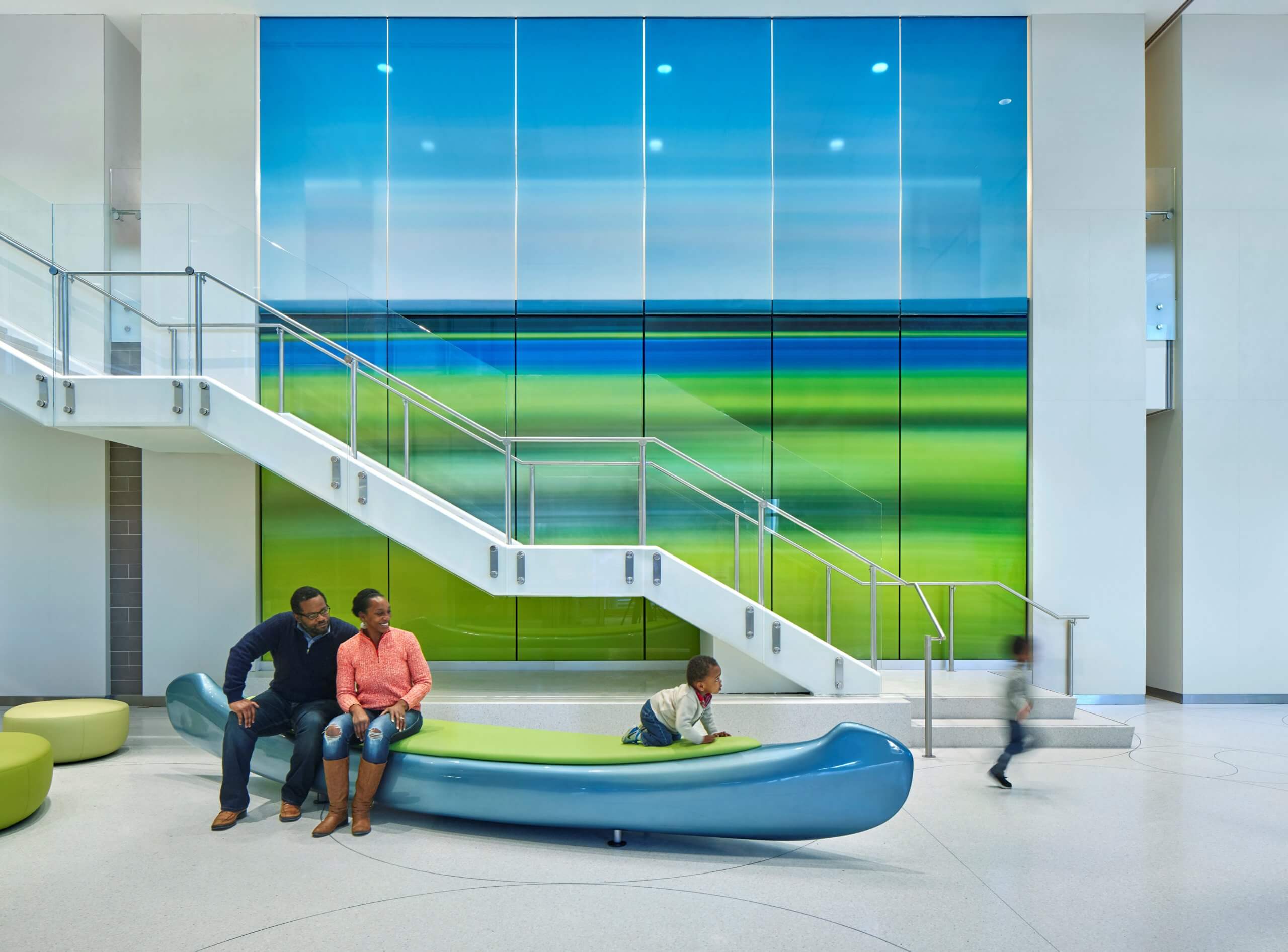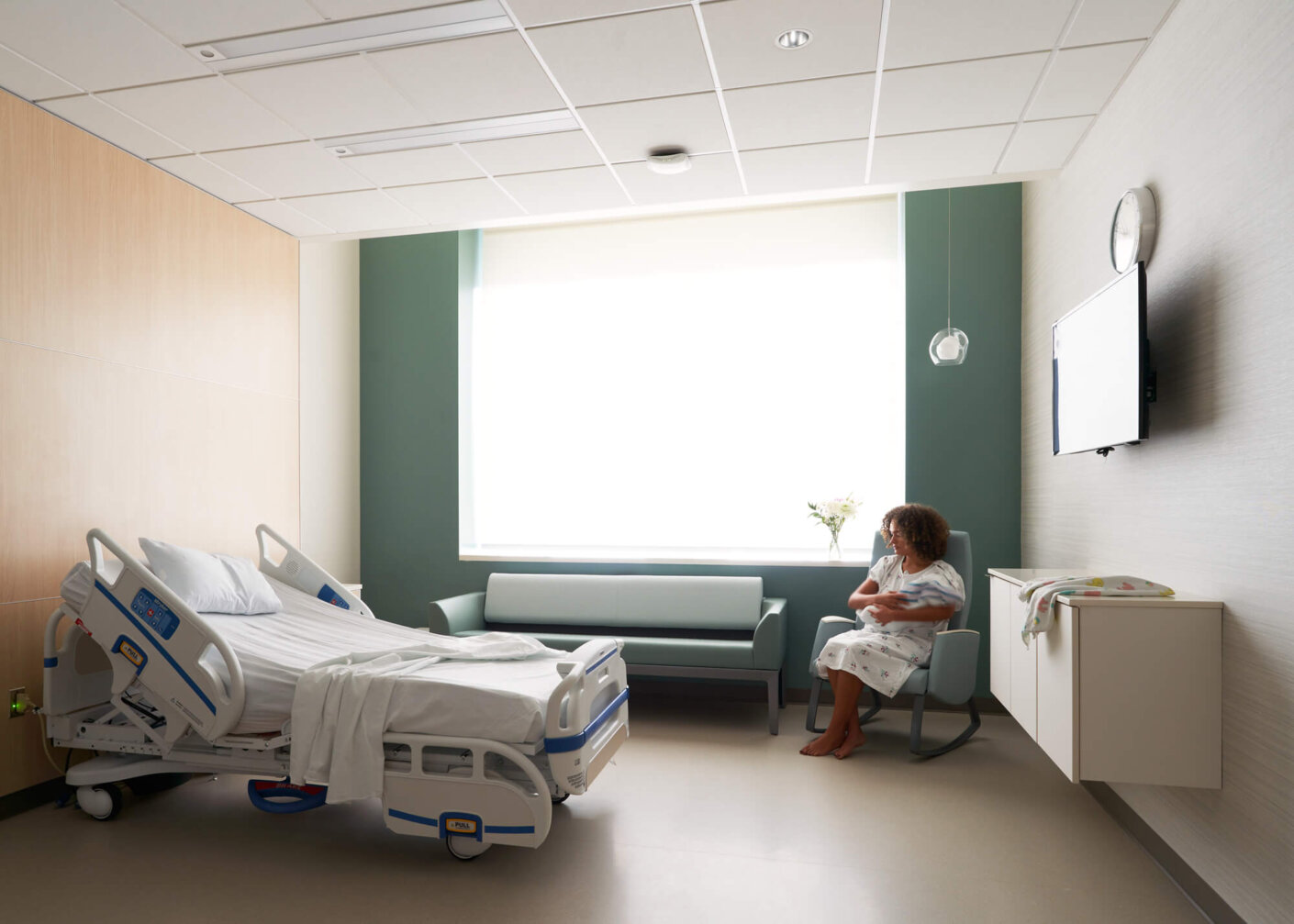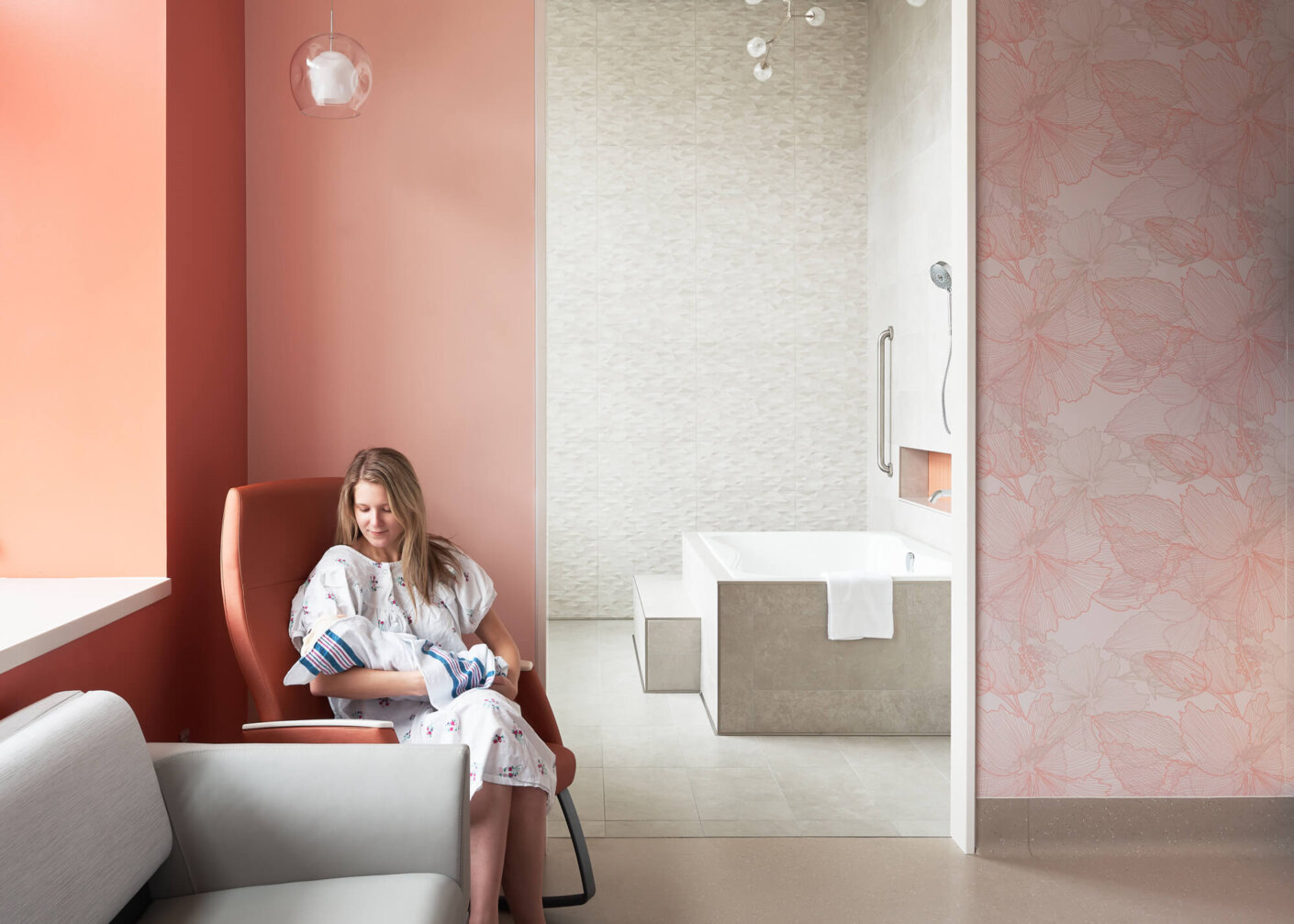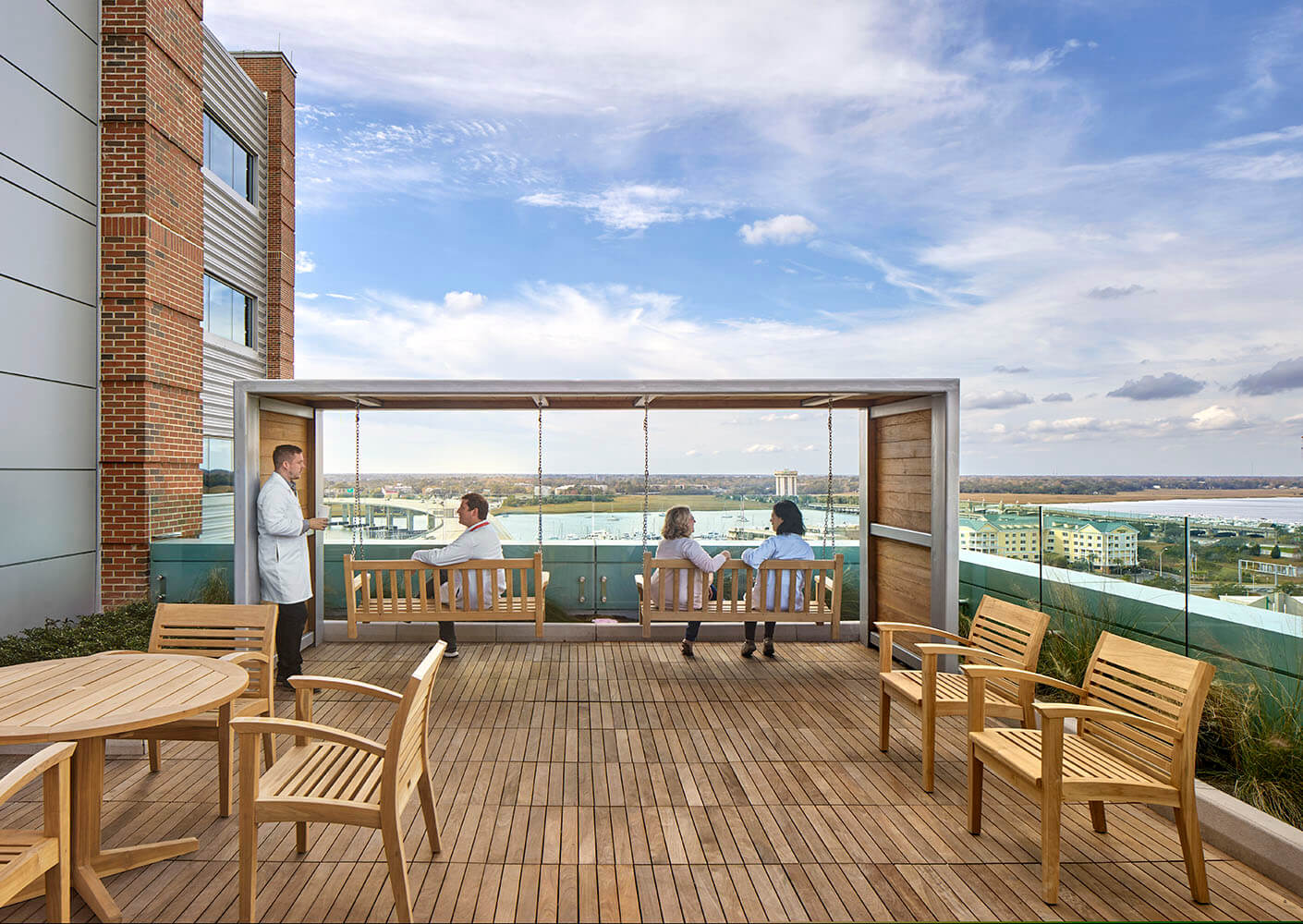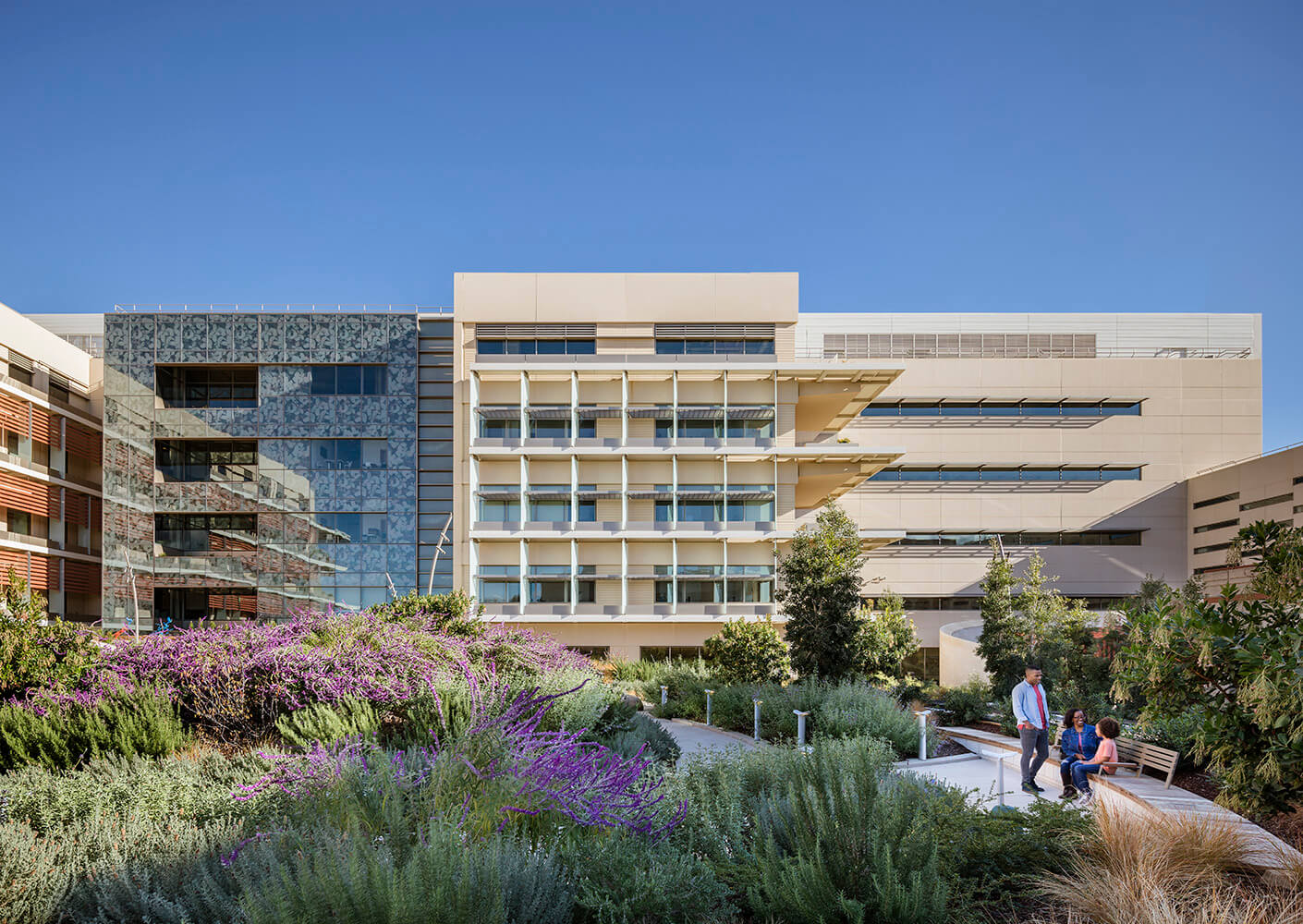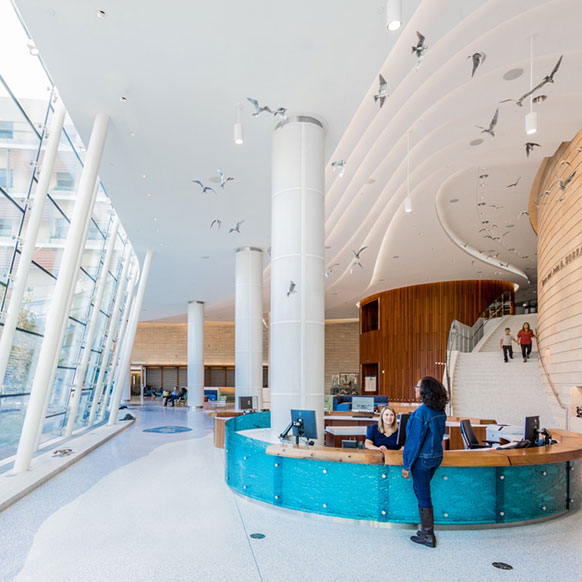The Unique Role of Women’s and Children’s Hospitals
Children’s hospitals service the healing of the most vulnerable and precious among us. From arrival to bedside, the patient experience is designed to balance a child’s emotional needs—unexplained terrors, sense of guilt, fright, and worry. A children’s hospital is a place where families are supported and where young patients with complex conditions spend most of their time outside of their home and school.
Just as crucial are women’s services, which center around the celebration of new life—a journey with endless possibilities and infinite complexities. Birthing and newborn centers incorporate high technology veiled by high-touch amenities, such as spas, hotels, and retreats. An exceptional birthing environment helps many new families forge the bonds of love and attachment that can carry them past the seemingly endless cycle of sleepless nights on a fragile infant’s journey to discharge. It is a supportive environment where women and their families process both tremendous joy and overwhelming sorrow—a place that holds optimism and resignation with equal grace.
The design and planning of women’s and children’s health facilities, therefore, play an integral role in young patients’ healing experiences. Here are five trends influencing the creation of these facilities.
